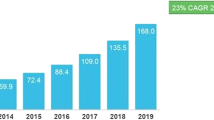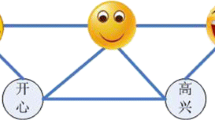Abstract
Social sensing is a new paradigm that inherits the main ideas of sensor networks and considers the users as new sensor types. For instance, by the time the users find out that an event has happened, they start to share the related posts and express their feelings through the social networks. Consequently, these networks are becoming a powerful news media in a wide range of topics. Existing event detection methods mostly focus on either the keyword burst or sentiment of posts, and ignore some natural aspects of social networks such as the dynamic rate of arriving posts. In this paper, we devised Dynamic Social Event Detection approach that exploits a new dynamic windowing method. Besides, we add a mechanism to combine the sentiment of posts with the keywords burst in the dynamic windows. The combination of sentiment analysis and the frequently used keywords enhances our approach to detect events with a different level of user engagement. To analyze the behavior of the devised approach, we use a wide range of metrics including histogram of window sizes, sentiment oscillations of posts, topic recall, keyword precision, and keyword recall on two benchmarked datasets. One of the significant outcomes of the devised method is the topic recall of 100% for FA Cup dataset.





Similar content being viewed by others
References
Aggarwal CC, Abdelzaher T (2013) Social sensing. Springer, Boston, pp 237–297
Naderi PT, Malazi HT, Ghassemian M, Haddadi H (2016) Quality of claim metrics in social sensing systems: a case study on irandeal. In: 2016 6th international conference on computer and knowledge engineering (ICCKE), pp 129–135
Aiello LM, Petkos G, Martin C, Corney D, Papadopoulos S, Skraba R, Göker A, Kompatsiaris I, Jaimes A (2013) Sensing trending topics in twitter. IEEE Trans Multimed 15(6):1268–1282
Corney David, Martin Carlos, Göker Ayse (2014) Spot the ball: detecting sports events on twitter. Springer International Publishing, Cham, pp 449–454
Corney D, Martin C, Göker A (2014) Two sides to every story: subjective event summarization of sports events using twitter. In: SoMuS@ ICMR. Citeseer
Nguyen DT, Jung JJ (2015) Real-time event detection on social data stream. Mob Netw Appl 20(4):475–486
Nguyen DT, Hwang D, Jung JJ (2014) Event detection from social data stream based on time-frequency analysis. Springer International Publishing, Cham, pp 135–144
Nguyen Duc T, Hwang Dosam, Jung Jason J (2015) Time-frequency social data analytics for understanding social big data. Springer International Publishing, Cham, pp 223–228
Zhang X, Chen X, Chen Y, Wang S, Li Z, Xia J (2015) Event detection and popularity prediction in microblogging. Neurocomputing 149(Part C):1469–1480
Paltoglou G (2016) Sentiment-based event detection in twitter. J Assoc Inf Sci Technol 67(7):1576–1587
Kaleel SB, Abhari A (2015) Cluster-discovery of twitter messages for event detection and trending. J Comput Sci 6:47–57
Guille A, Favre C (2015) Event detection, tracking, and visualization in twitter: a mention-anomaly-based approach. Soc Netw Anal Min 5(1):18
Unankard S, Li X, Sharaf MA (2015) Emerging event detection in social networks with location sensitivity. World Wide Web 18(5):1393–1417
Unankard S, Li X, Sharaf MA (2013) Location-based emerging event detection in social networks. Springer, Berlin, pp 280–291
Li Chenliang, Sun Aixin, Datta Anwitaman (2012) Twevent: segment-based event detection from tweets. In: Proceedings of the 21st ACM international conference on information and knowledge management, CIKM’12, New York, NY, USA, ACM, pp 155–164
Dewang RK, Singh AK (2018) State-of-art approaches for review spammer detection: a survey. J Intell Inf Syst 50(2):231–264
Martin C, Corney D, Goker A (2015) Mining newsworthy topics from social media. Springer International Publishing, Cham, pp 21–43
Sakaki T, Okazaki M, Matsuo Y (2010) Earthquake shakes twitter users: real-time event detection by social sensors. In: Proceedings of the 19th international conference on world wide web, WWW’10, New York, NY, USA, ACM, pp 851–860
Sakaki T, Okazaki M, Matsuo Y (2013) Tweet analysis for real-time event detection and earthquake reporting system development. IEEE Trans Knowl Data Eng 25(4):919–931
McMinn AJ, Jose JM (2015) Real-time entity-based event detection for twitter. Springer International Publishing, Cham, pp 65–77
Sun X, Wu Y, Liu L, Panneerselvam J (2015) Efficient event detection in social media data streams. In: 2015 IEEE international conference on computer and information technology; ubiquitous computing and communications; dependable, autonomic and secure computing; pervasive intelligence and computing, pp 1711–1717
Kumar S, Liu H, Mehta S, Subramaniam LV (2014) From tweets to events: exploring a scalable solution for twitter streams. CoRR arXiv:1405.1392v1
Adedoyin-Olowe M, Gaber MM, Dancausa CM, Stahl F, Gomes JB (2016) A rule dynamics approach to event detection in twitter with its application to sports and politics. Expert Syst Appl 55:351–360
Nichols J, Mahmud J, Drews C (2012) Summarizing sporting events using twitter. In: Proceedings of the 2012 ACM international conference on intelligent user interfaces, IUI’12, New York, NY, USA, ACM, pp 189–198
Buntain C, Lin J, Golbeck J (2016) Discovering key moments in social media streams. In: 2016 13th IEEE annual consumer communications networking conference (CCNC), pp 366–374
Anantharam P, Barnaghi P, Thirunarayan K, Sheth A (2015) Extracting city traffic events from social streams. ACM Trans Intell Syst Technol 6(4):43:1–43:27
D’Andrea E, Ducange P, Lazzerini B, Marcelloni F (2015) Real-time detection of traffic from twitter stream analysis. IEEE Trans Intell Transp Syst 16(4):2269–2283
Zhou Y, De S, Moessner K (2016) Real world city event extraction from twitter data streams. Procedia Comput Sci 98:443–448. The 7th international conference on emerging ubiquitous systems and pervasive networks (EUSPN 2016)/the 6th international conference on current and future trends of information and communication technologies in healthcare (ICTH-2016)/affiliated workshops
Ben Khalifa M, Redondo RPD, Vilas AF, Rodríguez SS (2017) Identifying urban crowds using geo-located social media data: a twitter experiment in New York city. J Intell Inf Syst 48(2):287–308
Tung K-C, Wang ET, Chen ALP (2016) Mining event sequences from social media for election prediction. Springer International Publishing, Cham, pp 266–281
Unankard S, Li X, Sharaf M, Zhong J, Li X (2014) Predicting elections from social networks based on sub-event detection and sentiment analysis. Springer International Publishing, Cham, pp 1–16
Tsakalidis A, Papadopoulos S, Cristea AI, Kompatsiaris Y (2015) Predicting elections for multiple countries using twitter and polls. IEEE Intell Syst 30(2):10–17
Kimura M, Saito K, Ohara K, Motoda H (2013) Learning to predict opinion share and detect anti-majority opinionists in social networks. J Intell Inf Syst 41(1):5–37
Andrews S, Gibson H, Domdouzis K, Akhgar B (2016) Creating corroborated crisis reports from social media data through formal concept analysis. J Intell Inf Syst 47(2):287–312
Lee J, Agrawal M, Rao HR (2015) Message diffusion through social network service: the case of rumor and non-rumor related tweets during Boston bombing 2013. Inf Syst Front 17(5):997–1005
Romano S, Martino SD, Kanhabua N, Mazzeo A, Nejdl W (2016) Challenges in detecting epidemic outbreaks from social networks. In: 2016 30th international conference on advanced information networking and applications workshops (WAINA), pp 69–74
Kaushik R, Chandra SA, Mallya D, Chaitanya JNVK, Kamath SS (2016) Sociopedia: an interactive system for event detection and trend analysis for twitter data. Springer India, New Delhi, pp 63–70
Petz G, Karpowicz M, Fürschuß H, Auinger A, Stříteský V, Holzinger A (2013) Opinion mining on the web 2.0–characteristics of user generated content and their impacts. In: Andreas H, Pasi G (eds) Human-computer interaction and knowledge discovery in complex, unstructured, big data. Springer, Berlin, pp 35–46
Petz G, Karpowicz M, Faschu H, Auinger A, StÅtesk V, Holzinger A (2015) Computational approaches for mining user’s opinions on the web 2.0. Inf Process Manag 51(4):510–519
Kanwar S, Mangal N, Niyogi R (2017) Event detection over twitter social media. Springer, Singapore, pp 177–185
Finkel JR, Grenager T, Manning C (2005) Incorporating non-local information into information extraction systems by gibbs sampling. In: Proceedings of the 43rd annual meeting on association for computational linguistics, ACL’05, Stroudsburg, PA, USA, Association for Computational Linguistics, pp 363–370
Han J, Pei J, Yin Y (2000) Mining frequent patterns without candidate generation. SIGMOD Rec 29(2):1–12
Socialsensor project. http://socialsensor.eu/. Accessed 3 July 2018
Petrović S, Osborne M, Lavrenko V (2010) Streaming first story detection with application to twitter. In: Human language technologies: the 2010 annual conference of the North American Chapter of the association for computational linguistics, HLT’10, Stroudsburg, PA, USA, Association for Computational Linguistics, pp 181–189
Teh YW, Newman D, Welling M (2006) A collapsed variational Bayesian inference algorithm for latent Dirichlet allocation. In: Advances in neural information processing systems, pp 1353–1360
Li H, Wang Y, Zhang D, Zhang M, Chang EY (2008) Pfp: parallel fp-growth for query recommendation. In: Proceedings of the 2008 ACM Conference on Recommender Systems, RecSys’08, New York, NY, USA, ACM, pp 107–114
Loper E, Bird S (2002) Nltk: the natural language toolkit. In: Proceedings of the ACL-02 workshop on effective tools and methodologies for teaching natural language processing and computational linguistics,vol 1, ETMTNLP’02, Stroudsburg, PA, USA. Association for Computational Linguistics, pp 63–70
Author information
Authors and Affiliations
Corresponding author
Rights and permissions
About this article
Cite this article
Toosinezhad, Z., Mohamadpoor, M. & Tabatabaee Malazi, H. Dynamic windowing mechanism to combine sentiment and N-gram analysis in detecting events from social media. Knowl Inf Syst 60, 179–196 (2019). https://doi.org/10.1007/s10115-018-1242-6
Received:
Revised:
Accepted:
Published:
Issue Date:
DOI: https://doi.org/10.1007/s10115-018-1242-6




